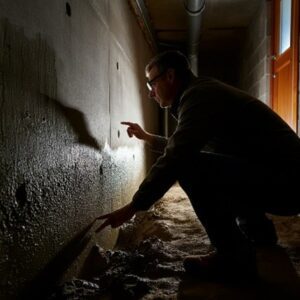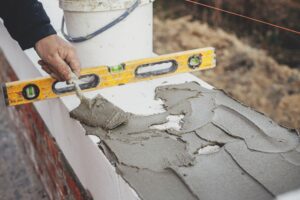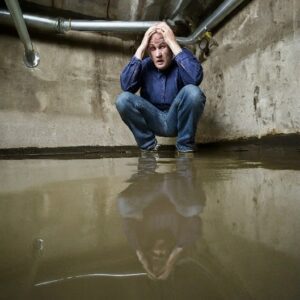Just recently, Edmonton experienced a summer weather event where a month’s worth of rain fell in just a few days.
It’s times like these that reveal the true condition of your foundation. Because structural damage and degradation is often hidden behind basement walls, it’s only in severe situations that you ever really discover cracks and defects that have manifested over time.

The foundation is the core of your home’s structural support system. It is essential that it is strong and sturdy to ensure the safety of your family and your property. However, weather conditions such as we see regularly in Alberta can greatly impact your foundation, causing damage that requires repair.
Here are a few conditions that can lead to foundation damage over time:
Prolonged and/or extreme heat
Extreme heat can cause the soil around your home to dry out, leading to shrinkage.
As soil dries out, it pulls away from the foundation, causing settling and potentially crack failures. This is more common in areas with clay soils, a substance more prone to expansion and contraction.
Heat can also cause concrete to expand and then contract as it cools down, leading to stress cracks.
Rain and moisture
Torrential or continuous rain such as seen often in Alberta can cause the soil around your foundation to expand, putting pressure on the foundation walls and potentially causing them to bow or crack.
This is especially common in areas with high amounts of clay, which can absorb large amounts of water and expand.
Often overlooked, gutters and downspouts not functioning or maintained properly can contribute to the problem by directing water towards the foundation instead of away from it.

behind an exposed basement wall.
Freezing temperatures
We live in an area of the world where -30C temperatures for days on end are a yearly occurrence. These prolonged sub-zero temperatures can cause foundation damage. Water in the soil around your foundation freezes and expands, exerting pressure on your foundation walls.
This can cause them to crack or shift. Typically called frost heave, it can be particularly problematic in areas with substrates like clay, which can house significant amounts of water throughout the year. Moisture that seeps into existing foundation cracks during seasonal thaws can also freeze and expand, causing the cracks to widen and potentially compromising the foundation.

What can you do about it?
While you can’t control the effects of weather, there are things you can do to mitigate the damage that it may cause:
- Maintain proper drainage around your home, including gutters and downspouts that direct water away from the foundation.
- Take note of the soil grade around your property. If it slopes toward your house, this is something that needs to be addressed.
- Inspect and repair (if necessary) window wells around your home.
- Ensure proper ventilation and insulation in your crawl space to prevent moisture buildup.
- Look for any cracks in the foundation and address promptly to prevent water infiltration.
- Regularly inspect your foundation for any signs of damage and address them promptly.
- Check for moisture or moldy odours in your basement after a heavy rain.
Weather conditions can have a significant impact on your home’s foundation, but with proper maintenance and timely repairs, you can keep your foundation strong and sturdy.
If you notice any signs of foundation damage we have outlined above, call Shield Foundation Repair at 780 760 4900 to protect what matters most.
Global News image Source: https://globalnews.ca/news/9778204/central-northern-alberta-rainfall-edmonton/




